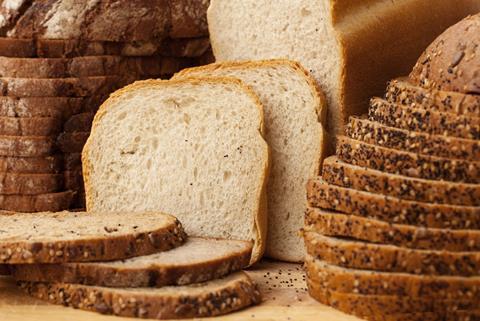Rising prices, supply issues and labour shortages are just a few of the challenges that faced the baking industry in 2022 – and things aren’t looking much better for 2023.
However, there are glimmers of hope for those able to take advantage of the opportunities out there.
Here, leaders from bakery’s biggest trade associations and firms outline what they think 2023 holds for the sector:

Andrew Pyne, chief executive, Federation of Bakers
The baking industry has seen unprecedented challenges which are set to continue in 2023.
Whilst the price of wheat continues to be significantly higher in comparison to last year, due to the invasion of Ukraine, the global price of wheat has stabilised in the last few months and has seen a moderate decrease due to the Black Sea Grain Initiative. This initiative will remain in place until spring, but there is also a widening on the premium for milling wheat. Both of which add significant increases to the bakery industry input costs, with little expectation of significant price falls in the year ahead.
We have not seen the end to food price inflation for a while yet
The impact of Russia’s invasion continues to play a significant role in energy prices globally, too. Whilst the UK industry has temporary support from government under the EBRS, when the support is withdrawn, or business’ come off any hedges or their futures tariffs, exposure to market pricing will drive costs up further into spring 2023. That will lead to further challenges on margins and to the inflationary prices of bread, which has reached 136 pence in November 2022 the first time it’s exceeded the previous peak prices of 2013 [ONS Data – 800g sliced white loaf, 14 Dec 2022].
As we speak, there is still no indication from government on how it will support industry following changes to the energy support package EBRS in the spring. The government’s early indicators suggest a significant change in the level of support, meaning further energy hikes in prices come spring and suggests that we have not seen the end to food price inflation for a while yet.

Securing and retaining staff in a period of a tight labour market with low unemployment, inflation and increasing salary demands adds to challenges faced by the bakery businesses. The training of bakers and skilled craftsmen is both costly and an extensive time investment; ensuring a future supply of talent in this backdrop remains a challenge.
Fuel and transport price pressures have been well documented for the haulage industry. With bakeries typically making deliveries seven days a week, the impact of these rising costs on bakery businesses has seen further squeezing of margins.
The industry has been careful to not pass on all these costs to consumer prices, absorbing much of the price hikes, finding new efficiencies in the value chain. It remains critical to the industrial bakery industry that the supply chain remains strong and robust, with suppliers remaining resilient in the face of the challenges.
A natural solution to increasing labour and energy costs is to review the opportunity automation and technology can deliver. Many businesses will be reviewing how they can reduce energy use in their drive towards net zero, and reduce input costs, whilst automation has been a partial solution to labour challenges. However, with business confidence low, margins and profits reduced and interest rates increasing, investment in technology may feel like a distant solution. Is this an opportunity for government to commit to industry, offering tax relief on investments in green technology, helping support the industry growth agenda, sustainability, and the UK’s food security?

John Lindsay, CEO, Baker & Baker
Inflationary pressures will continue into 2023, although we anticipate that the worst of the economic headwinds have now passed.
We still expect to see modest price rises throughout the year affecting the baking industry, and this will put greater pressure on consumers at the till.
Inflation across the entire economy is likely to have a significant impact on all consumer spending decisions. This will affect the type and volumes of products that consumers decide to purchase. We are likely to see shoppers seeking out products that demonstrate genuine value.
The impact of HFSS regulations will continue to resonate. HFSS has had an immediate impact on in-store bakery, with the location and promotional restrictions greatly impacting volumes and visibility.

It is still unclear what support, if any, the UK government will provide to industry for energy bills from April onwards. There is no immediate end in sight to higher energy bills, so we’d urge the government to come forward with a new support package as soon as possible. There is a great deal of uncertainty, which is stifling growth and impacting consumer confidence.
However, if energy prices and raw material inflation do begin to stabilise as we move through 2023, this will allow greater flexibility on pricing and help to restore confidence.
In the meantime, focusing on value and ranges that resonate with multiple consumer segments will be important.
And despite the economic challenges, consumers will still seek out moments of indulgence or a treat. Bakery products are sold at a relatively low price point and are thus much more accessible for all shoppers.

Karen Dear, director of operations, Craft Bakers Association
Craft bakers are expecting that many of the challenges they faced in 2022, like higher costs, will continue well into 2023. A recent survey of CBA members indicated that the increasing cost of energy and ingredients are of most concern. To help counter this, many bakers have raised their prices but, as a result, 48% of CBA members are concerned about a potential decline in sales, as consumers struggle with the cost of living.
Whilst the resilience that bakers have shown over the last two years continues, 15% of craft bakers reported in the recent survey that they are potentially closing shops as a result of rising costs – this is up from 5% in October.
Changes to customer buying habits pose another challenge for bakers in 2023. Indulgence amongst customers will see a decline and as a result, half of bakers predict the popularity of luxury items, such as personalised products, to decrease while the popularity of low-cost products will rise.

In response to the current challenges, CBA members have already begun to adopt cost saving measures. Sixty percent have reduced their product range and 58% have reduced staff.
Given the anticipated increase in demand for lower cost items and reduced demand for more indulgent products, bakers can also review their ranges to make sure they are offering products that meet consumer needs.
A recent survey of CBA members showed that convenience is expected to be popular amongst customers in 2023. Almost half (46%) of bakers predicted customers will be shopping locally, while lunch-on-the-go will also grow in popularity. This growth is also potentially driven by the cost-of-living crisis which has seen a decline in customers eating out in restaurants, especially at lunch and will instead be eating at their desks – be that at home or at work.

Tim Clarkson, cluster director UK and Ireland, Dawn Foods
The last few years have been challenging but 2023 is likely to be much harder for the bakery industry, with price inflation, supply of raw materials and labour continuing to be the main issues.
The war in Ukraine and now Avian Bird Flu is having an impact on the supply of raw materials and, as a result, Dawn, like everyone else in bakery manufacturing, is looking to mitigate these challenges. We look to source alternative ingredients which can be used without having to change specifications or recipes, investing significantly in R&D to enable us to do this.
As well as the challenges facing the industry, consumer spending patterns because of the recession will have an impact in 2023. As we get into the first quarter of 2023, we are predicting that consumer spend will be down and there will be a shift in spending patterns, with consumers spending more of their hard-earned cash to eat at home.
My worry is that when times are tough, bakers will lower the quality of their products to get the sales, but that is false economy
Even in times of crisis, consumers are still keen to treat themselves and luckily, sweet bakery is the perfect treat. High street bakers are still subject to the same pressures of price inflation, supply and lack of skilled labour that large scale manufacturers such as Dawn have. Our advice to customers in this channel is to really believe in the quality of your product and price accordingly. Perhaps reduce your range a little but make sure that what you do offer is the best quality it can be – so the best chocolate muffin or the best doughnut for example.
My worry is that when times are tough, bakers will lower the quality of their products to get the sales, but that is false economy. Skill and craft have gone into your products; consumers will spend if they know that what they are buying is worth it. Investing in quality ingredients really is important.

Alasdair Smith, chief executive, Scottish Bakers
The cost-of-living crisis continues to dominate the concerns of our members. Soaring energy costs and rising ingredient bills, coupled with the ongoing recruitment and retention troubles we face make the price of doing business harder than it has ever been. We have talked previously of an existential crisis for bakers in Scotland (and I suspect in England too) and I cannot see this going away for 2023. Our members fear what lies beyond the end of March 2023 when the price cap for business energy users is currently scheduled to end. We fear that without further intervention we will see many businesses forced into closure.
Along with our sister associations across the food and drink sector, we have been and continue to lobby government for long term security. The energy price cap is only for six months to the end of March 2023, so the threats for businesses are still there.

Our craft is valued and loved by the communities we serve so the opportunity is there to keep innovating and to keep delighting customers by perhaps bringing a little cheer through what is undoubtedly going to be a tough winter for us all. Many members advise that despite the challenges they are busier than ever, though of course with slimmer margins.
What we do see, though, is immense creativity with grit and determination: so, businesses with passion and flair really do have the opportunity to stake their claim on the high street of the future and to be a part of bringing town centres back to life. But I fear for many the focus for the next year will simply be on surviving.

David Wagstaff, managing director, St Pierre Groupe
One challenge the industry will need to address is the cost-of-living crisis. We are seeing the impact of inflation in both the UK and the US – and whilst it means that for many, purse strings will be tightened as costs continue to rise, there is an opportunity for brands like ours.
Now is a great time for retailers to lean into premium brands – with the understanding of what ‘premium’ means for shoppers – beyond price point. For consumers, the trend for premiumisation is here to stay. Previously, shoppers were elevating their meals at home because they couldn’t travel or dine out in the pandemic. Now that the cost of living is on the up, consumers are still looking to treat themselves well at home. Elevated meals and quality products that save shoppers time and provide an easy solution for quality entertaining at home are doing well throughout the store.
What happens when consumers ‘feel the pinch’, is not that they spend less money, but that they become more discerning with where and how they spend that money
Retailers offering a trade up in one area of the grocery store can drive increased sales in other areas. For example, a shopper who opts for a premium brioche burger bun from St Pierre is more likely to pair it with premium meats and cheeses.
What happens when consumers ‘feel the pinch’, is not that they spend less money necessarily, but that they become more discerning with where and how they spend that money. That means that brands and suppliers offering quality goods have an opportunity.
The financial difference for consumers between buying ‘good’ or ‘best’ is marginal – therefore, shoppers are more likely to opt for the better quality, or premium offering. It’s different if you’re talking about cars or high-value purchases, but everyday grocery brands are subject to a different purchase journey. Knowledgeable brands and retailers should be ready to highlight quality goods to shoppers.
Inflation is being felt across the board. So, there’ll be two camps of shoppers, those who spend a little extra knowing they’re getting a better-quality product and become brand loyal; and those who don’t spend the extra, but then don’t have an experience that keeps them coming back.


























No comments yet